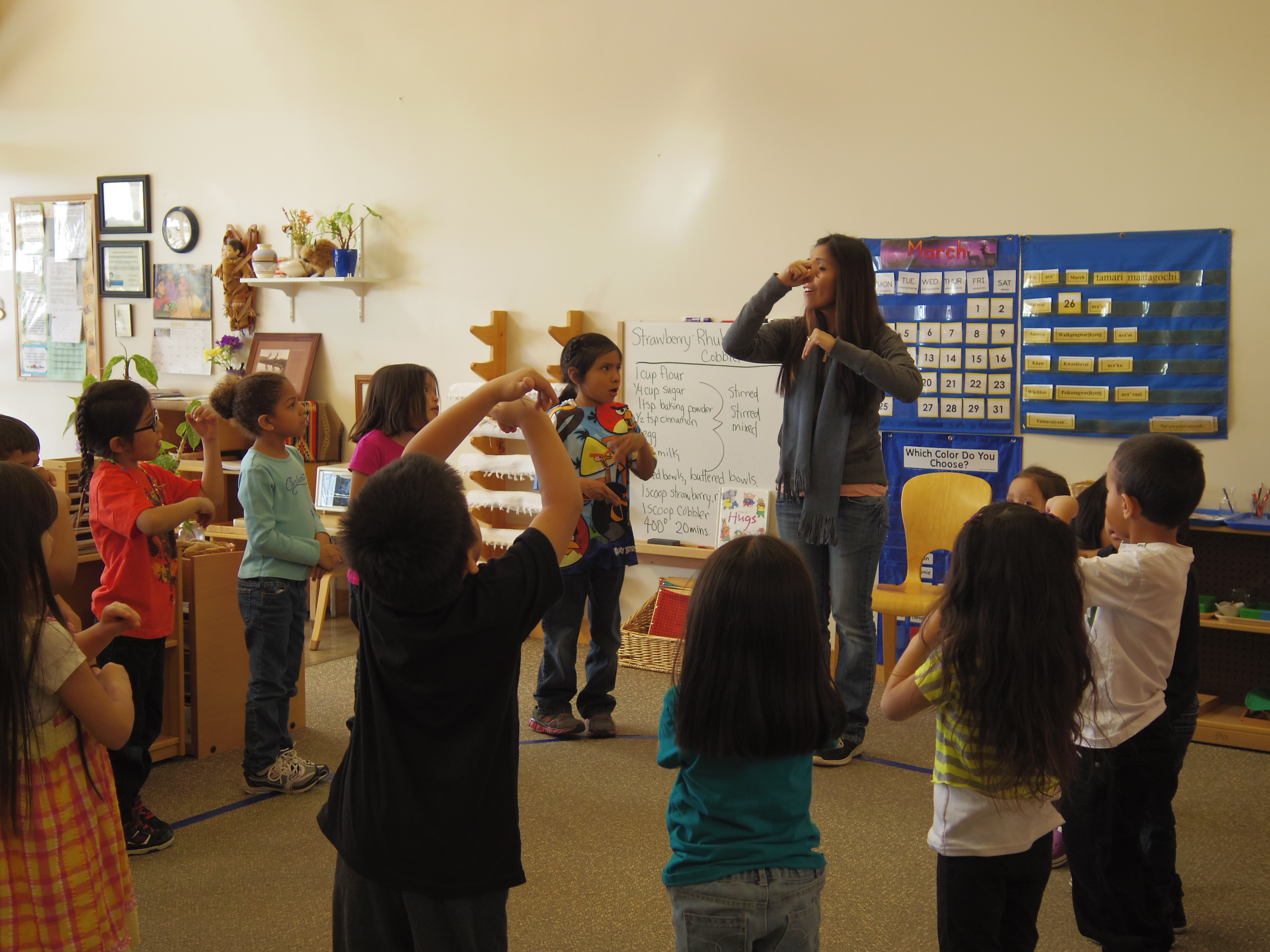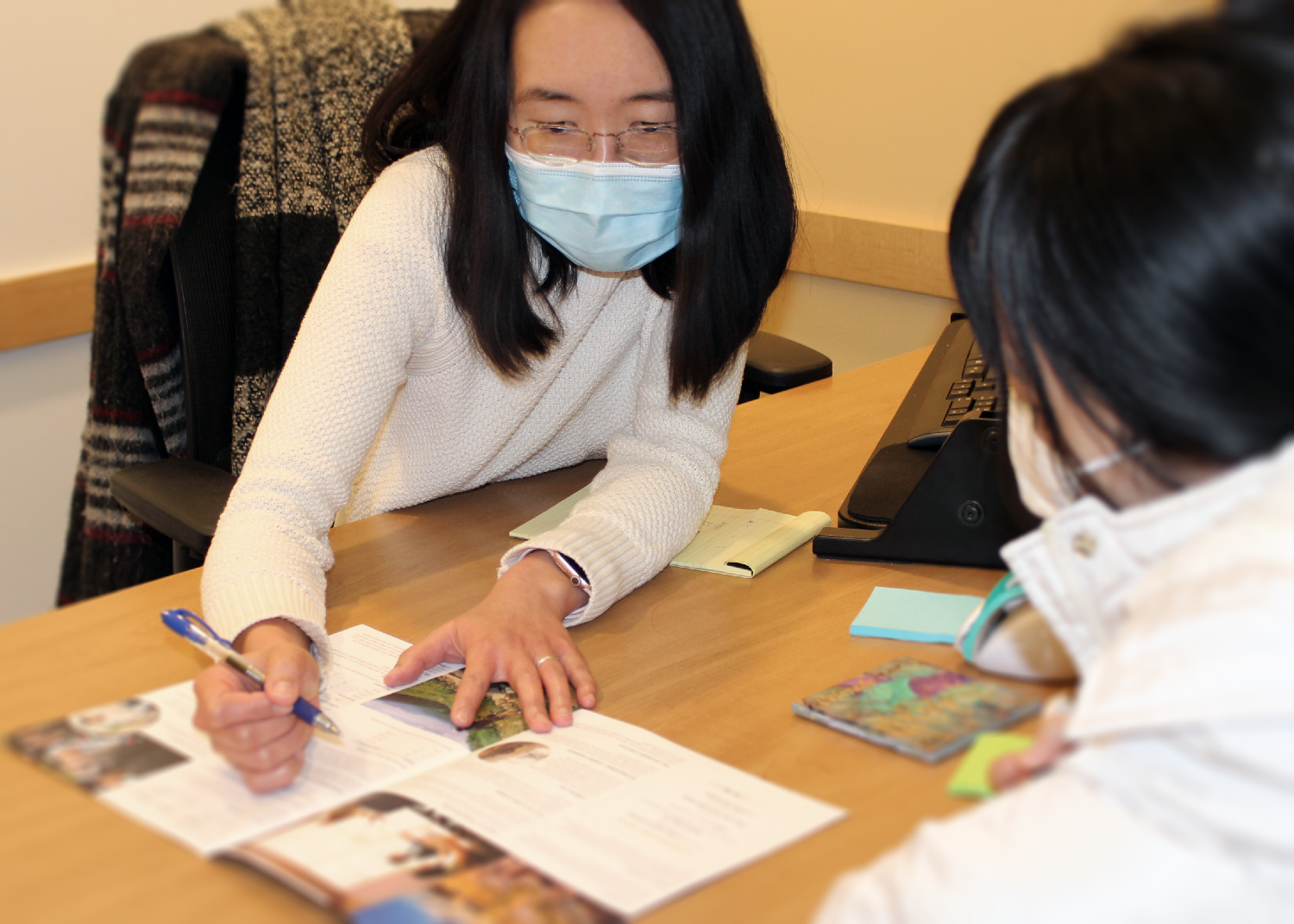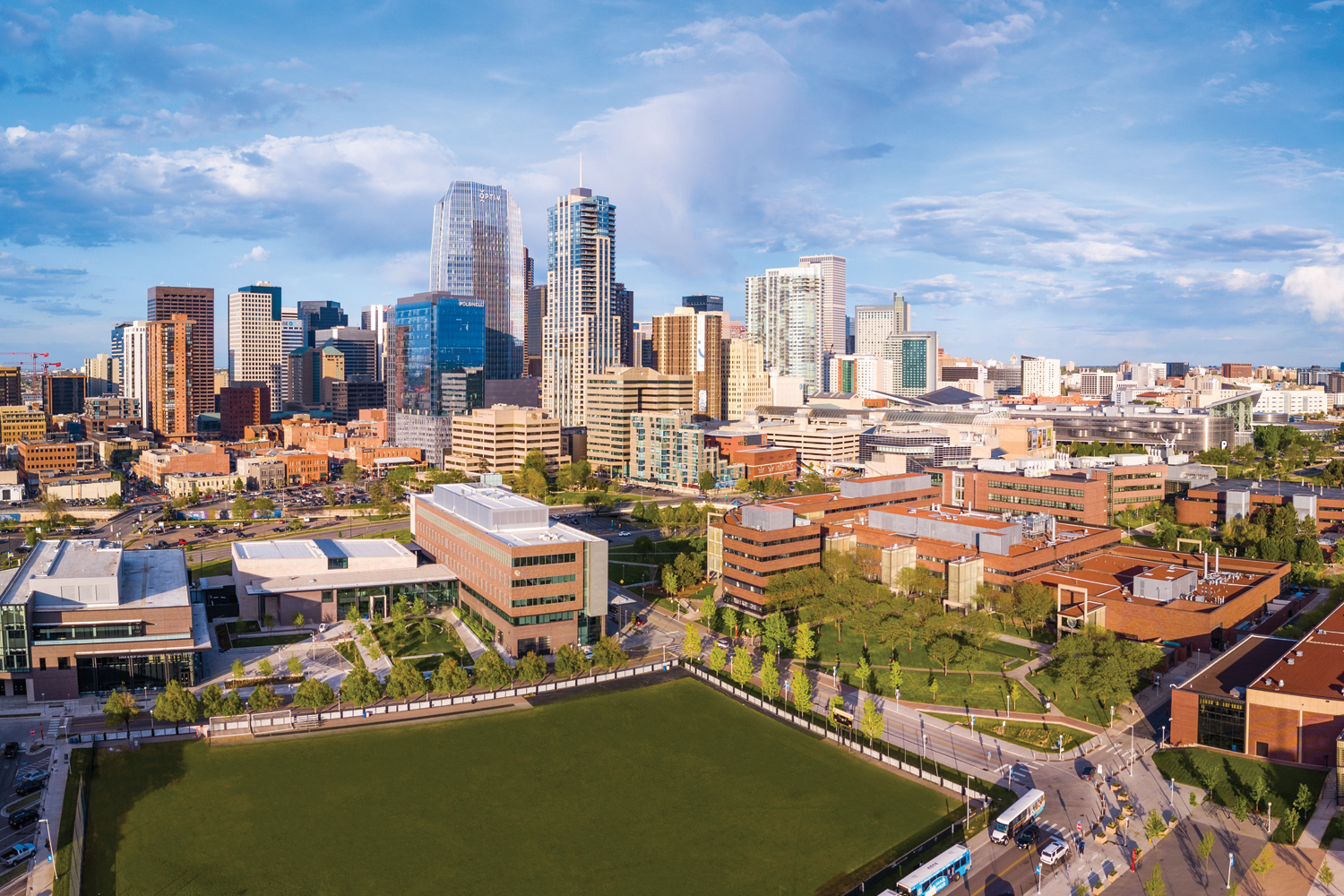Spring Break: A Visit to the Southern Ute Nation

by Junfei Tian
What images first come to mind when thinking about life on Native American lands? A tribal elder wearing a colorful headdress with eagle feather decorations? A barefoot and bare-chested man with two long braids hunting for game? Mystical worship?
For me, at least, such impressions about life on Native American lands come from my childhood memories of watching U.S.-made films and cartoons in China. And even after I did some research about contemporary Reservation life, I did not have a clear picture of what it’s all about. So I was really excited to sign up for the alternative spring break trip to the Reservation of the Southern Ute Indian Tribe.

After spending five days on the Southern Ute Indian Reservation, I can say that it was nothing like what I’d imagined. This reservation is well developed. Since the discovery of gas and oil on this land in the 70s, the Tribe has created a number of energy-linked businesses – or “the money maker,” as the locals call them – which support many area non-profit organizations and schools. (The Tribe also owns and operate the Sky Ute Casino, which we toured as well. Our hosts graciously allowed us to stay in the Casino hotel.)
On the day after we arrived, eight of us were divided into three teams to do volunteer works at different places. Phyllis and Rick worked in the garden of the Southern Ute Education Center; Matt, Boyang, Chuyin and Liyu worked in the Southern Ute senior center; and Zimo and I helped out first at an elementary school and then visited the local Montessori Academy, run by the Tribe.
The Montessori approach to teaching and learning impressed me a lot! “Our purpose is to help more children,” remarked one leader. “Some have learning disabilities and not many traditional schools would accept this kind of student.” I observed a child with little self control who didn’t behave like the others. His teacher was very patient to talk to him.
Every child can learn. That is their motto. Students are taught to learn languages and other subjects with their hands. This approach is unique. In fact, some European educators come here to help train their instructors.
Although the Ute people have their own language, many tribal members cannot speak it fluently. The Academy is the only school that offers Ute language class.
During our visit, Zimo and I played with children and sat in on many classes with them, including a Ute language class.
My day as a volunteer in the schools convinced me that the Southern Ute Tribe really is concerned about education for its members. And teach their next generation new technologies as well as their tribal culture and language. It turns out that the Tribe will pay tuition, room, and board for all four years of college to any Tribal member who gains admission into an acceptable college or university anywhere in the world. So my hope is that the children will bring back their language and pass on the Tribe’s oral history tradition for generations to come.
To learn more about the history of Native Americans in the Four Corners region, we spent a day at Mesa Verde National Park. Later, when I thought about the magnificent cliff dwellings we saw, it reminded me of something we heard the next day.

Seated in a large circle on an elevated stand in a beautiful spacious, modern hall, six of the seven members of the Southern Ute Tribal Council convened a formal hearing with our group. As we were seated below in the first two rows reserved for petitioners, I realized that this was going to be a much more formal event than expected.
After making a few, brief remarks about the Southern Ute lands that are representative of a “checkerboard design,” since some privately own lands are found within the Reservation, the vice-chair invited us to ask questions.
“In what sense is your nation sovereign?” asked one of our group members. The most vocal member of the Council made sure that we understood that this meant total sovereignty, an independent nation. And that the lands “ceded” to the Native American tribes were not “ceded” at all. Rather, they were their lands to begin with and that if anything the tribes were the ones who “ceded” lands to the U.S. government. “Keep in mind,” she remarked, “that these were considered the least-desirable lands.” But perhaps the Southern Ute Tribe has the last laugh now that lucrative oil and gas deposits have been found on this same Reservation land.
“In the future, what do you see as the biggest challenges for the Tribe,” asked another member of our group. “Maintaining our population and our culture,” answered one of the Council members. Less than 1500 Southern Utes are identified as such. According to current policy, a person must have at least 25% Southern Ute blood in order to be a member of the Tribe. As young people move off the Reservation and marry outside the Tribe, they’re worried that their distinct population might dwindle. In fact, one of the Council members argued that it would be fairer to define Tribal membership culturally rather than through blood lineage. But that the Tribe inherited that “quantum blood” definition from the U.S. government.
It’s no wonder, then, that we were given a private tour of the new, state-of-the-art Southern Ute Museum and Cultural Center. (For its size, the Museum rivals anything you might see elsewhere. ) And at the same time were shown how to make our own “chokers” with beads and strings, which is one of the many cultural activities the Tribe promotes in its center.
In the end, I think the success of the Southern Ute Tribe Reservation is not due only to the discovery of oil and gas reserves, but also because of their leaders’ vision to use these extensive resources wisely. It was clear from our visit that the Tribe devotes large sums of money to educate its tribal members. And to promote its culture and heritage among those outside the Tribe.
It wouldn’t be a surprise to me if more and more educated Southern Utes decide to return to their homeland. I know I will someday, proudly wearing around my neck the choker I made with my own two hands.
UPDATES
International College Beijing
-

Zoom Meetings & Guidance for ICB Students Coming to Denver
Nov 2, 2021For ICB students on the CU Denver campus, Mo collaborates closely with the College of Liberal Arts and Sciences academic advisors to help students with course options and to find employment through the Curricular Practical Training (CPT) program.Full story -

Greetings from Jingxuan “Jasmine” Mo
Oct 21, 2021"Welcome, ICB Students! At CU Denver, you’ll receive a world-class education and the unique experience of studying and living in the heart of downtown Denver, adjacent to the nearby scenic Rocky Mountains. I hope you will enjoy and benefit from the education and community experience here to its fullest. And remember, we’re here to assist and support you!"Full story -

Play Ball! ICB Students Cheer for the Colorado Rockies
Oct 18, 2021ICB students in Denver cheered one of their new favorite baseball teams, the Colorado Rockies, at Coors Field. The ICB students joined fellow classmates from around the world for this international student event, one of many free activities organized for students by the Office of International Affairs.Full story -






